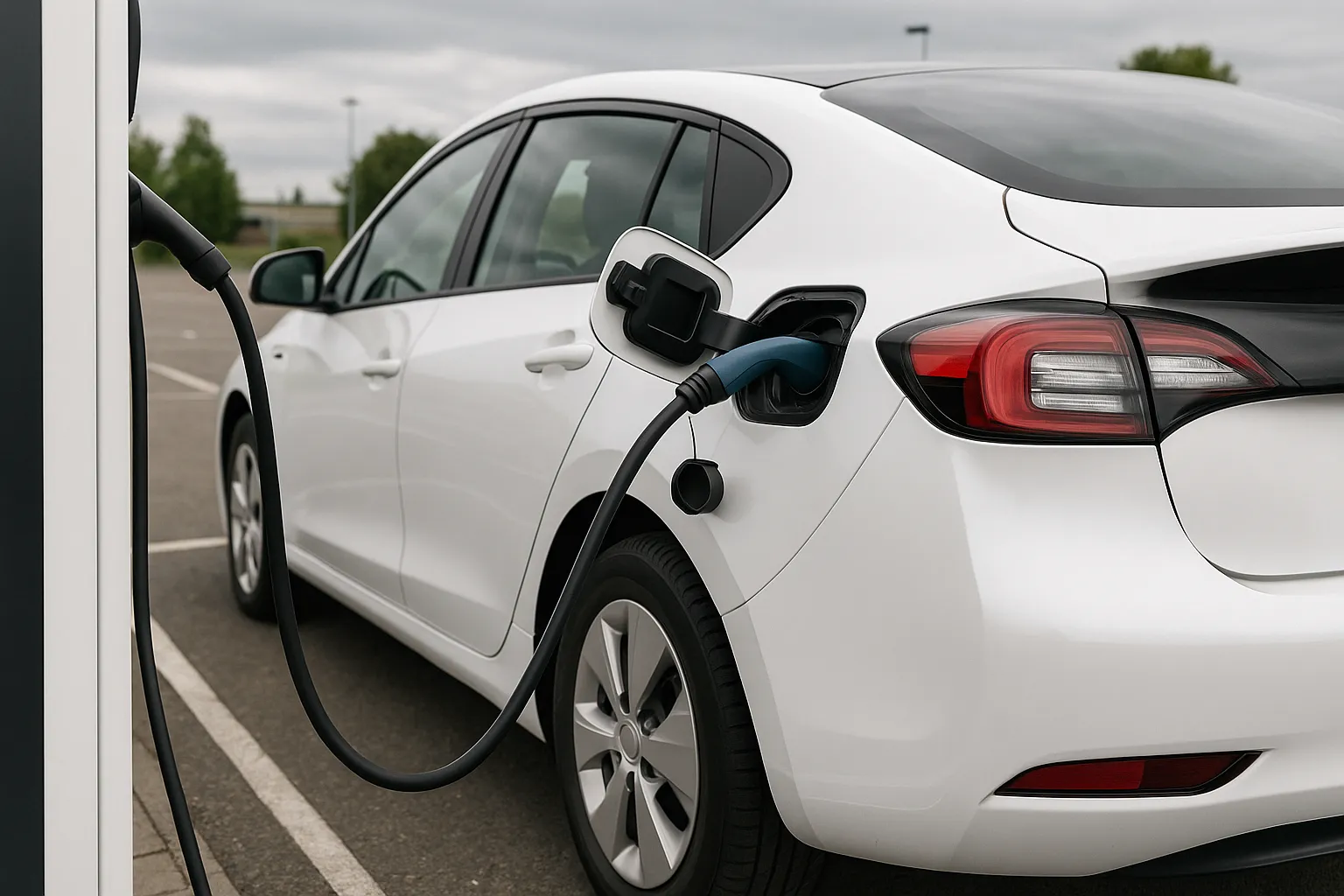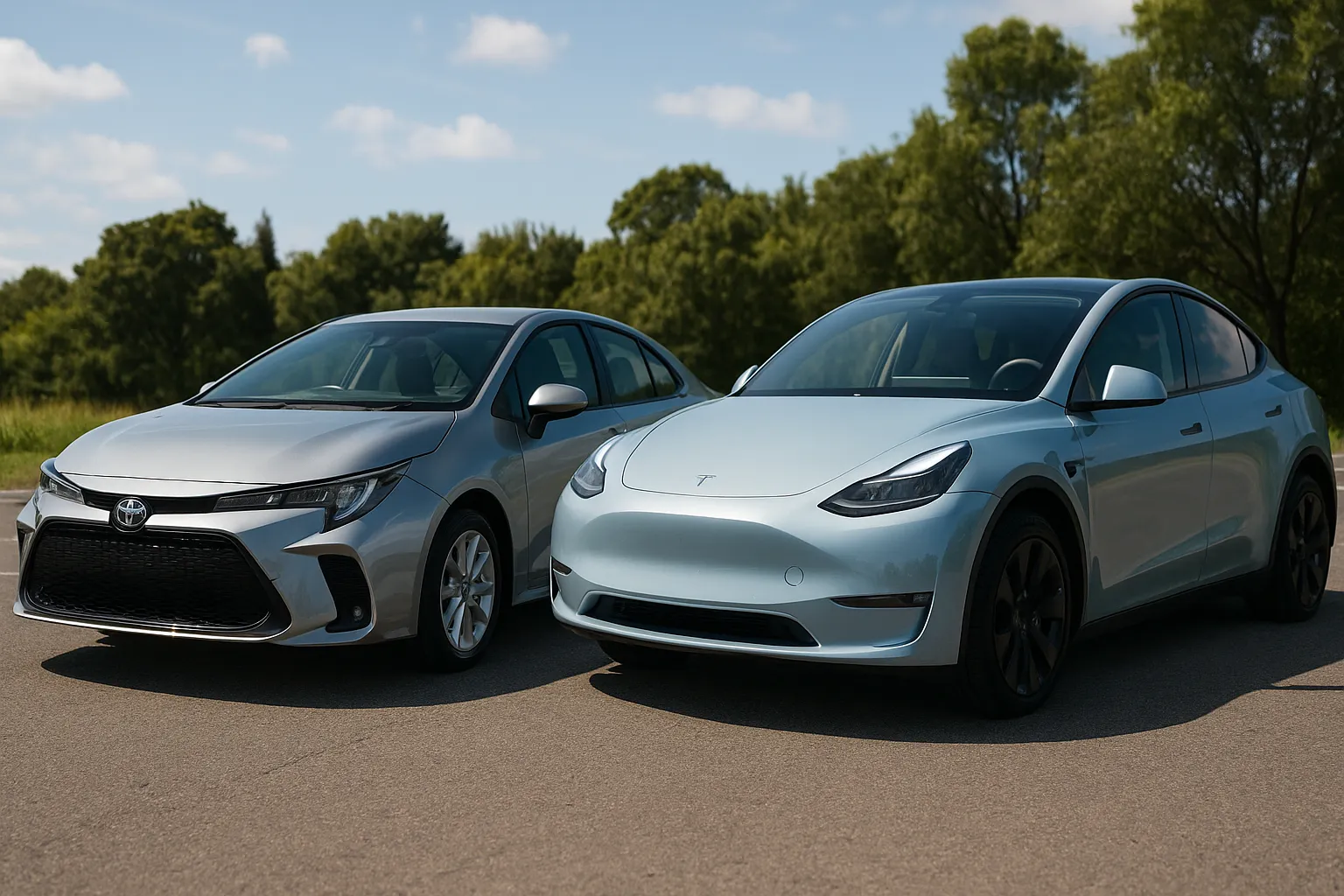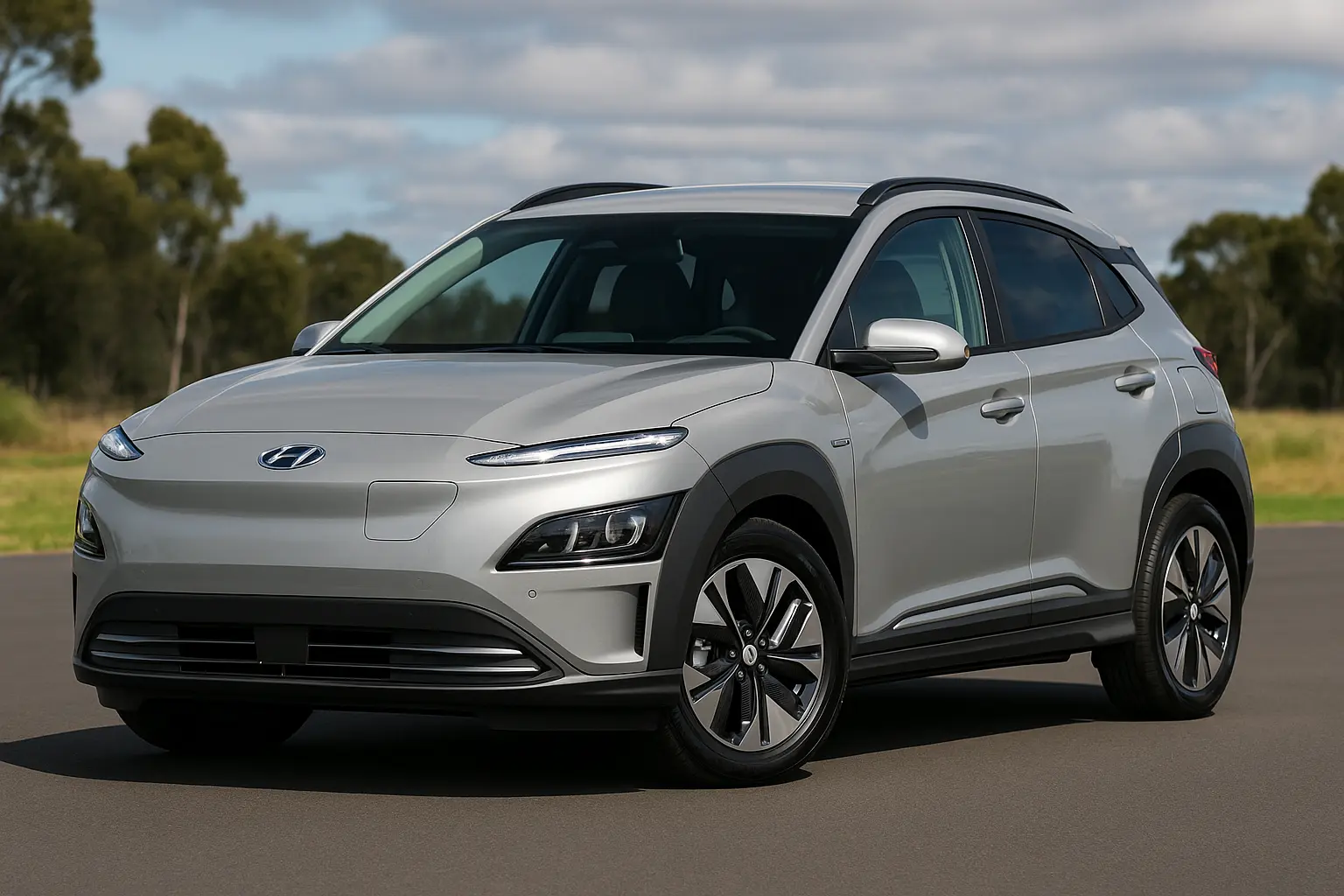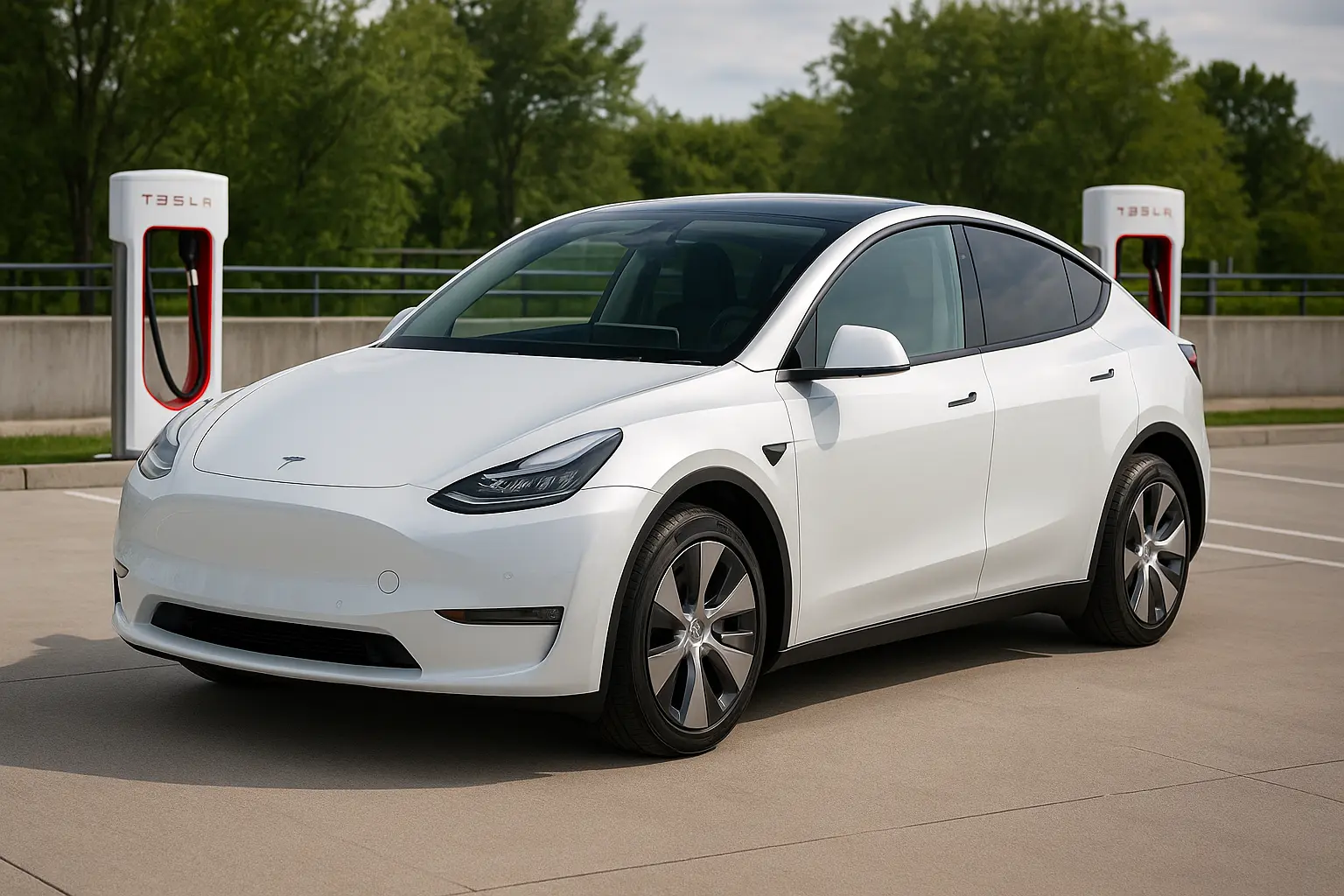The automotive industry is rapidly evolving, and in 2025, Australian car buyers are increasingly faced with a key decision: should you go hybrid or fully electric? With fuel prices remaining volatile, growing environmental awareness, and an expanding network of EV infrastructure, the debate of hybrid vs electric cars is more relevant than ever.
This comprehensive guide explores all critical aspects – from ownership cost to environmental impact – to help Australians decide which option is best suited for their lifestyle and budget in 2025.

1. Understanding the Basics: Hybrid and Electric Cars Explained
What Is a Hybrid Car?
A hybrid vehicle combines an internal combustion engine (usually petrol) with one or more electric motors. The most common types in Australia include:
- Mild Hybrid (MHEV): Supports the engine but can’t drive on electricity alone.
- Full Hybrid (HEV): Can drive short distances using electric power only.
- Plug-in Hybrid (PHEV): Has a larger battery and can drive 30–80 km purely on electricity before switching to petrol.
What Is an Electric Car (EV)?
An electric car runs solely on electric power, using a large battery and electric motor. There is no fuel tank or engine – just plug, charge, and go.
Popular EVs in Australia include:
- Tesla Model 3 & Model Y
- BYD Atto 3
- Hyundai Ioniq 5
- Polestar 2
- Kia EV6
2. Cost of Ownership in Australia (2025)
Purchase Price
- Hybrid Cars: Generally cheaper upfront than EVs. Example: Toyota Corolla Hybrid ~$33,000.
- Electric Cars: Prices are dropping, but still higher. Example: BYD Dolphin ~$39,000.
Running Costs
| Cost Type | Hybrid Car | Electric Car |
|---|---|---|
| Fuel/Electricity | ~$8–10 per 100km | ~$3–5 per 100km |
| Servicing/Maintenance | Moderate | Low |
| Registration (incentives in some states) | Varies | Discounts available for EVs |
Verdict: EVs win on long-term cost savings due to lower fuel and maintenance costs, despite a higher upfront price.
3. Fuel Efficiency and Energy Use
Hybrid Fuel Economy
Most hybrids achieve around 4–5L/100km, thanks to regenerative braking and electric assist. Ideal for city driving with lots of stop-start traffic.
Electric Vehicle Energy Consumption
Measured in kWh/100km, typical EVs use about 13–20kWh/100km. Energy use can vary by model, driving style, and climate.
Example Comparison (Cost per 100km):
- Hybrid (petrol @ $2.00/L): $8.00–$10.00
- EV (electricity @ $0.30/kWh): $3.90–$6.00
4. Charging vs Refuelling: Convenience in Australia
Refuelling a Hybrid
Quick and familiar – any petrol station will do. No need for charging infrastructure.
Charging an EV
Charging Types:
- Home Charging: 7kW wall box charger (full charge in 6–10 hours)
- Public AC Charging: 11–22kW (~3–4 hrs)
- DC Fast Charging: 50kW–350kW (~20 mins to 1 hr)
Charging Network in Australia (2025):
- 5,000+ public chargers
- DC fast charging along major highways
- Tesla Supercharger & Chargefox networks expanding
Verdict: If you have home charging, EVs are ultra-convenient. For long-distance rural drivers, hybrids may still offer more flexibility.
5. Range and Real-World Use
| Metric | Hybrid Car | Electric Car |
|---|---|---|
| Total Range | 600–900 km | 300–600 km (typical) |
| Refuelling Time | ~3–5 minutes | 30 mins–10 hrs |
| Ideal Use Case | Regional, mixed driving | City, short-to-mid trips |
Electric vehicle ranges are improving. In 2025:
- Tesla Model 3 RWD: ~513 km WLTP
- Kia EV6 GT-Line AWD: ~484 km WLTP
- Hyundai Kona Electric: ~505 km WLTP
6. Maintenance and Servicing
Hybrid Vehicles
- Engine + electric components = more parts
- Oil changes, belts, spark plugs required
- Toyota hybrids have proven very reliable
Electric Vehicles
- No oil changes
- Fewer moving parts = less wear
- Software updates can fix issues remotely
Verdict: EVs require significantly less maintenance over time.
7. Environmental Impact
| Factor | Hybrid Car | Electric Car |
|---|---|---|
| CO2 Emissions | Lower than petrol | Zero tailpipe emissions |
| Battery Impact | Smaller battery | Large battery, more resource-intensive |
| Emission Source | Petrol + electric | Depends on energy grid (coal vs renewable) |
Green Factor: EVs win, especially as Australia’s renewable energy mix improves. Hybrids are better than full petrol/diesel, but still emit CO2.
8. Government Incentives in Australia (2025)
Several states/territories offer EV support:
| State/Territory | Incentives Available (2025) |
|---|---|
| NSW | Stamp duty exemptions, $3,000 rebate |
| VIC | Subsidies for EVs under $68K |
| QLD | $6,000 rebates + registration discounts |
| ACT | 2 years free registration + zero-interest loans |
| WA, SA, TAS | Incentives expanding in 2025 |
Hybrids typically do not qualify for these benefits.
9. Availability of Models in Australia
Top Hybrid Cars 2025
- Toyota Corolla Hybrid
- Toyota RAV4 Hybrid
- Honda Civic e:HEV
- Subaru Forester Hybrid
- Lexus NX 350h
Top Electric Cars 2025
- Tesla Model 3 & Y
- BYD Seal & Atto 3
- Kia EV6 & Niro EV
- Hyundai Ioniq 6 & Kona Electric
- Polestar 2
Australia’s EV market is growing fast, and many global brands are entering with affordable models.
10. Resale Value and Future-Proofing
Hybrid Cars
- Strong resale for Toyota and Lexus models
- Still appealing to buyers who fear charging infrastructure
Electric Cars
- Residual values improving
- Increasing demand for used EVs
- Battery degradation concerns being reduced with better tech
By 2030, Australia is likely to have stricter emission standards – EVs will be more future-proof than hybrids.
11. Urban vs Rural Driving: What Should Australians Choose?
| Region | Hybrid Ideal? | EV Ideal? |
|---|---|---|
| Urban | ✅ | ✅✅ |
| Suburban | ✅✅ | ✅✅ |
| Regional | ✅✅✅ | ✅ |
| Remote/Rural | ✅✅✅ | 🚫 (charging access) |
Takeaway: EVs suit city lifestyles. Hybrids remain practical in areas where charging is limited.
12. Summary Table: Hybrid vs EV (2025 Australia)
| Feature | Hybrid Car | Electric Car |
|---|---|---|
| Upfront Cost | ✅ Lower | ❌ Higher |
| Running Costs | ✅ Moderate | ✅✅ Very Low |
| Fuel/Energy Source | Petrol + Electric | 100% Electric |
| Refuelling/Charging | ✅ Easy Fuel Access | ✅ if charging at home |
| Maintenance | ❌ More Parts | ✅ Fewer Parts |
| Environmental Impact | ✅ Lower | ✅✅ Zero Emissions |
| Incentives | ❌ Few | ✅✅ Generous |
| Long-Term Resale Value | ✅ Consistent | ✅ Improving |
| Rural Compatibility | ✅✅✅ | ❌ Depends on coverage |
13. Final Verdict: Which Is Better for You in 2025?
Choose a Hybrid if:
- You travel long distances or into rural/regional areas often.
- You want a reliable, fuel-efficient car without needing a charger.
- You're on a tighter budget and want lower upfront costs.
Choose an Electric Vehicle if:
- You mostly drive in cities or have access to home charging.
- You’re looking to save on running and maintenance costs long-term.
- You want to reduce your environmental impact and take advantage of EV incentives.
Conclusion
In 2025, both hybrid and electric cars have a firm place in Australia’s automotive landscape. Hybrids offer a practical bridge between petrol and electric worlds, while EVs lead the charge into a greener future. Your choice ultimately depends on your driving habits, budget, access to charging, and desire for sustainability.

Ruby McKenzie
Ruby McKenzie is a dynamic content writer from Brisbane with a background in journalism and public relations. She thrives on transforming complex ideas into relatable content across tech, travel, and culture niches.
Leave a comment
Your email address will not be published. Required fields are marked *
Related posts
Car Leasing vs Buying in Australia: Which Option Truly Saves You More in 2025
You might be interested in
Hyundai Kona Electric Review | Compact EV | Range | Price in Australia
Nov 01, 20252,506 viewsTesla Model Y Review | Electric SUV | Range | Price in Australia
Nov 01, 20254,456 views



